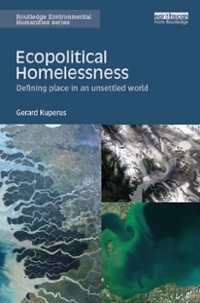Question
Please explain your answers briefly to support your answer thank you! I just really need correct answers thanks 21. Free trade agreements result in trade
Please explain your answers briefly to support your answer thank you!
I just really need correct answers thanks
21. Free trade agreements result in trade creation and diversion as barriers drop for member countries but remain higher for nonmembers.
TRUE
FALSE
22. Offshoring refers to the transferring of production abroad.
TRUE
FALSE
23. Trade diversion occurs when the supply of products shifts from countries that are members of an economic bloc to those that are nonmembers.
TRUE
FALSE
24. Cultural change may take place as a result of choice or imposition.
TRUE
FALSE
25. The born-global perspective holds that companies step straight onto the world stage, engaging international trade from inception.
TRUE
FALSE
26. International business is an ongoing process that deepens and broadens interdependence among countries.
TRUE
FALSE
27. Isolation from other groups, especially because of language, tends to destabilize culture.
TRUE
FALSE
28. Managers devise strategies to engage international markets in ways that that fortify their companies' competitiveness, boost their profitability, and sustain their growth.
TRUE
FALSE
29. A company can engage in international business only through exporting and importing merchandise and services.
TRUE
FALSE
30. Culture includes norms based on learned attitudes, values, and beliefs.
TRUE
FALSE
31. Trade controls that indirectly affect quantity and directly affect price include quotas, VERs, "buy local" legislation, arbitrary standards, licensing arrangements, foreign-exchange controls, administrative delays, and reciprocal requirements.
TRUE
FALSE
32. Despite the documented benefits of free trade, no country permits an unregulated flow of goods and services across its borders.
TRUE
FALSE
33. A mixed economy endorses the doctrine of socialism, its principle of the partly visible hand of an activist government that commands and controls some factors of production, and the goal of regulating economic freedom.
TRUE
FALSE
34. Managers use several indicators to assess the performance and potential of an economy, including inflation, unemployment, debt, income distribution, poverty, and the balance of payments.
TRUE
FALSE
35. Intellectual property is the creative ideas, innovative expertise, or tangible insights that give an individual, company, or country a competitive advantage.
TRUE
FALSE
36. The infant-industry argument for protection holds that governmental prevention of import competition is necessary to help certain industries evolve from high-cost to low-cost production.
TRUE
FALSE
37. Once protection is eliminated among member countries, trade creation disallows MNEs to specialize and trade based on comparative advantage.
TRUE
FALSE
38. Trade controls to improve economic relations with other countries include objectives of improving the balance of payments, raising prices to foreign consumers, gaining comparable access to foreign markets, preventing foreign monopoly prices, assuring that domestic consumers get low prices, and shifting revenue from foreign producers to domestic tax receipts.
TRUE
FALSE
39. Economically free countries tend to have lower per capita income, standards of living, and social stability than do less-free or repressed countries.
TRUE
FALSE
40. The World Trade Organization (WTO) replaced GATT in 1995 as a continuing means of trade negotiations that aspires to foster the principle of trade without discrimination and to provide a better means of mediating trade disputes and of enforcing agreements.
TRUE
FALSE
Step by Step Solution
There are 3 Steps involved in it
Step: 1

Get Instant Access to Expert-Tailored Solutions
See step-by-step solutions with expert insights and AI powered tools for academic success
Step: 2

Step: 3

Ace Your Homework with AI
Get the answers you need in no time with our AI-driven, step-by-step assistance
Get Started


